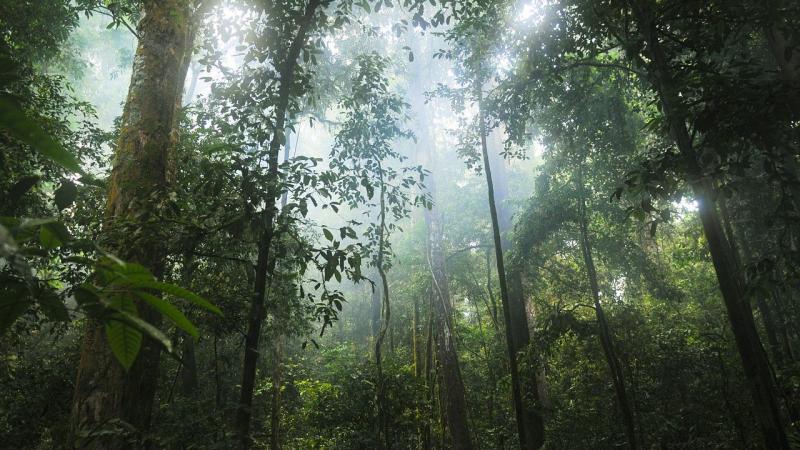
Forests are not only home to important species of animals and birds, but also store a lot of carbon in trees, which would have otherwise escaped into the atmosphere as carbon dioxide and warmed the planet. Hence, reclaiming plantation lands that were once forests, helps in regeneration and the health of forests. However, do forests regenerate successfully in such efforts? In a recent study, researchers from Gubbi Labs, Bengaluru and Ashoka Trust for Research in Ecology and the Environment (ATREE), Bengaluru, have archived the regeneration of forests during eleven years in the Kalakkad Mundanthurai Tiger Reserve, Tamil Nadu.
If you have ever visited a coffee or tea plantation and marvelled at the ‘nature’ around, you may be in for a rude shock. Plantations like this, which consists largely of the same species of plant, do not attract much biodiversity despite the lavish scenery. ‘Primary' forests, on the other hand, are with minimal traces of human interferences. While secondary forests are made up of a subset of trees found in the primary forests, and are formed after some disturbance or modification.
In this study, published in the Journal of Tropical Ecology, the researchers have recorded various species of trees in a former eucalyptus plantation within the tiger reserve, and have compared it to plantation data collected in 2005 and with the primary forest of the surroundings. In the 1960s, some forest patches in the Kalakkad Mundanthurai Tiger Reserve were felled to grow eucalyptus to serve as firewood for the nearby tea estates. These plantations were subsequently abandoned, and are now a part of the protected reserve.
“This setting gave us a good opportunity to study natural regeneration which happens in a mosaic of eucalyptus plantation and native forest”, says Mr Vignesh Kamath from Gubbi Labs, who is an author of the study.
“In 2005, a previous study looked at the regeneration of native forests in eucalyptus plantations here. They found that it serves as a nursery for native plants and facilitates regeneration”, he adds.
The researchers repeated the same methods used in the earlier study and looked at trees present in thirty randomly selected sampling plots of 10m by 10m in the forest. In each plot, they measured the structural aspects of the trees like their diameters and classified them as either adults, saplings or seedlings. They further analysed how the seeds of these trees were dispersed in the forest, and the changes in the species structure, called succession stages. They classified the trees into gap species that are the first ones to colonize the plantation (and usually have a smaller seed size and are bird dispersed), closed canopy species that colonize the plantations at a later regeneration stage (and usually have a larger seed size), and other introduced species. The researchers finally compared their data with that from 2005 and documented the differences.
In a span of eleven years, the researchers observed that the plantation forest had a 67% increase in the species diversity of adult trees and a whopping 156% increase in the number of trees which are classified as gap species. Also, there were twice as many trees dispersed by birds and thrice the number of trees dispersed by mammals in the regenerating plantation forest. However, there was a decrease in saplings in the plantations and a marginal decrease in small-seed species over time.
The primary forest, as expected, had five times the density of closed-canopy trees as compared to the plantation forest. Closed-canopy trees are important because they can grow to larger sizes and hence store much carbon, acting as carbon sinks. The researchers observed that forests regenerating in the plantations did not accumulate as many closed canopy trees over time.
When the abandoned eucalyptus plantations were first studied in 2005, it was already 25 years since there was any human intervention in these forests. In 2016, after 36 years of remaining untouched, these plantations are still growing to resemble their surrounding natural counterparts. “Our study found that while structural aspects of the regeneration in plantation forests, like the total volume of biomass in trees per plot, might fast approach that of the primary forests, there is still a long way to go for the functional aspects, like abundance of species with large seed-sizes, to catch up with primary forests”, says Mr. Ashish Nerlekar, an author of the study formerly from ATREE, talking about the findings.
The study fills in a significant gap in our understanding of how forests in protected areas are regenerating in India.
“Large portions of native forests are present in plantations today, and their area is ever increasing. Such studies which over time compare and contrast the structural and functional points of different kinds of forests are rarely conducted in India”, remarks Mr Nerlekar stressing the need for such comparative studies.





